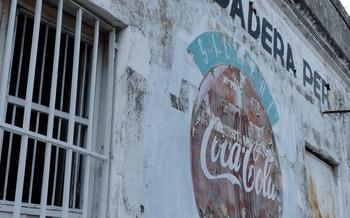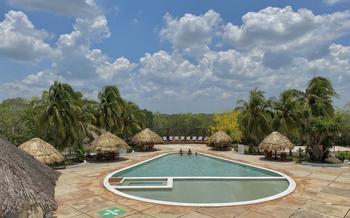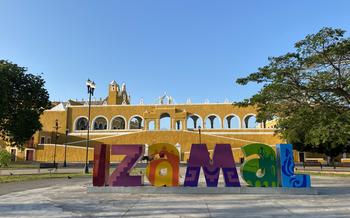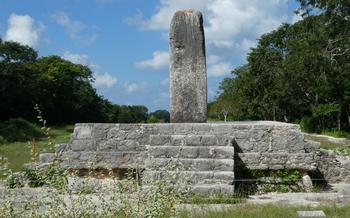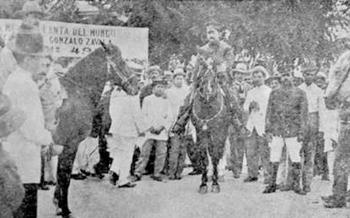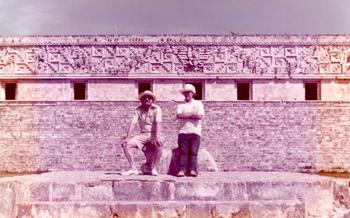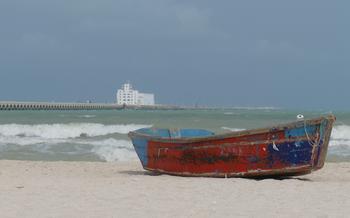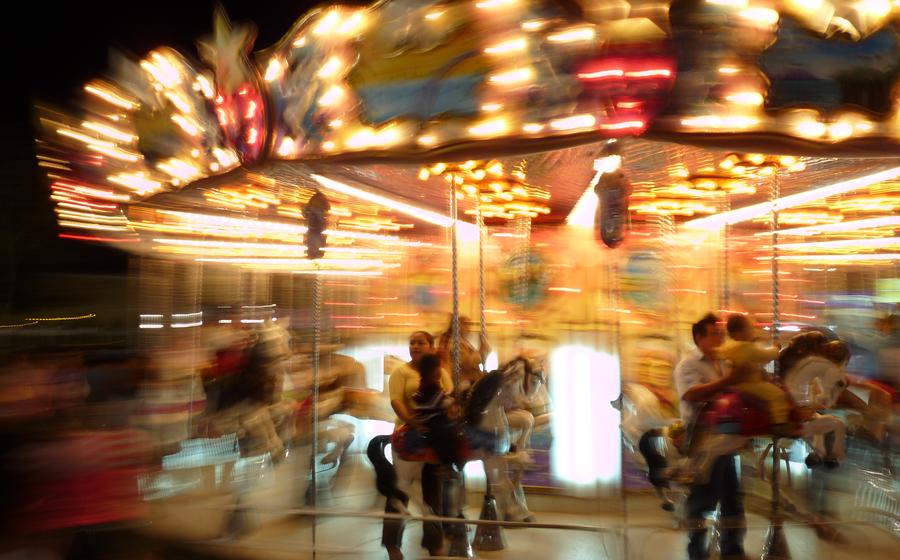
Cenote Xlacah at Dzibilchaltún
- Dzibilchaltún: A Journey to the Past
- Cenote Xlacah: An Oasis in the Yucatán
- Exploring the Archaeological Zone
- Immerse in the Local Culture
- Transportation Options
- Plan Your Visit Wisely
- Capture the Beauty of Dzibilchaltún
- Unveiling Archaeological Treasures
- Local Cuisine Delights
- Preserve the Historical Legacy
- Discover Hidden Gems
- Embrace the Mayan Culture
- Respect Local Customs and Traditions
- Insider Tip: Hidden Cenote
Dzibilchaltún: A Journey to the Past
Journey back in time to the ancient Maya city of Dzibilchaltún, a testament to the rich history and cultural legacy of the region. Located just 15 miles north of Mérida, this archaeological site offers a glimpse into the lives of the Maya people who once thrived here. Explore the well-preserved ruins, including the iconic Temple of the Seven Dolls, and admire the intricate carvings and architectural wonders that tell the story of a once-great civilization. Capture the essence of this ancient city through stunning photographs, preserving the memories of your exploration for years to come.
Cenote Xlacah: An Oasis in the Yucatán
Geological Formation and Regional Significance
Cenote Xlacah, a natural wonder nestled within the Dzibilchaltún archaeological site, is a testament to the unique geological processes that have shaped the Yucatán Peninsula. This sinkhole, or cenote, owes its existence to the dissolution of limestone bedrock by groundwater. Over time, the collapse of the overlying rock created this breathtaking water-filled cavern.
Cenote Xlacah holds significant geological importance within the region. The Yucatán Peninsula is renowned for its karst landscape, featuring numerous cenotes, caves, and underground rivers. The cenote's formation process sheds light on the region's hydrogeological dynamics, providing valuable insights into the peninsula's subterranean environment.
Crystal-Clear Waters and Thrilling Activities
Stepping into Cenote Xlacah is like entering a hidden paradise. The cenote's crystal-clear waters, shimmering in shades of turquoise and emerald, invite visitors to immerse themselves in its refreshing depths. The cenote's visibility is exceptional, allowing for mesmerizing underwater exploration.
Swimming, snorkeling, and diving are popular activities at Cenote Xlacah. Snorkelers can marvel at the diverse aquatic life, including colorful fish, turtles, and the occasional crocodile. Divers can venture deeper to discover the cenote's underwater caves and tunnels, revealing a hidden world of stalactites, stalagmites, and ancient Mayan artifacts.
Safety Measures for a Memorable Experience
While exploring Cenote Xlacah, safety should always be a priority. The cenote's depth can vary, so it's essential to assess your swimming abilities and stay within your limits. Life jackets are available for rental, providing additional safety for non-swimmers and those seeking peace of mind.
Respecting the natural environment is crucial. Avoid touching or disturbing the wildlife, and refrain from using harsh chemicals that could harm the delicate ecosystem. Dispose of waste responsibly to preserve the cenote's pristine beauty for future generations to enjoy.
Exploring the Archaeological Zone
Journey through time as you explore the archaeological zone of Dzibilchaltún, a treasure trove of ancient Mayan history and culture. Among the must-see structures is the Temple of the Seven Dolls, a captivating edifice that once served as a ceremonial center. Admire the intricate carvings and sculptures adorning the temple, offering glimpses into the beliefs and practices of the ancient Maya.
The site's rich historical context and cultural significance come alive through interactive exhibits and displays. Discover artifacts unearthed during excavations, providing tangible evidence of the site's past inhabitants. Learn about the daily lives, traditions, and innovations of the ancient Maya, gaining a deeper appreciation for their remarkable civilization.
Enhance your exploration with guided tours, led by knowledgeable experts who bring the site's history and significance to life. Immerse yourself in captivating tales of the Maya, unraveling the mysteries of their advanced society. Guided tours offer a deeper understanding of the archaeological zone, allowing you to connect with the past in a meaningful way.
Immerse in the Local Culture
The region surrounding Dzibilchaltún and Cenote Xlacah is steeped in vibrant traditions and customs that reflect the rich heritage of the local Mayan community. As you explore, you'll have the opportunity to engage with local artisans and learn about their traditional crafts, from intricate weaving to colorful pottery. These artisans often set up stalls near the archaeological site and cenote, allowing you to admire their handiwork and purchase unique souvenirs directly from the source.
Immerse yourself in the flavors of the region by savoring traditional Mayan cuisine. Must-try dishes include cochinita pibil, a slow-roasted pork dish cooked in banana leaves, and papadzules, corn tortillas filled with eggs and topped with a pumpkin seed sauce. Local restaurants and eateries near Dzibilchaltún offer authentic dining experiences, where you can enjoy these delicacies while soaking in the local ambiance.
To truly delve into the local culture, time your visit to coincide with one of the many festivals and events held throughout the year. These celebrations showcase the region's rich cultural heritage through traditional music, dance, and rituals. Participating in these events offers a unique glimpse into the lives and traditions of the Mayan people, creating lasting memories of your journey.
Transportation Options
Renting a Car: For a flexible and independent exploration of the region, renting a car is an excellent option. It allows you to set your own pace, make spontaneous stops, and venture into nearby attractions.
Organized Tours: If you prefer a hassle-free experience, organized tours from Mérida to Dzibilchaltún and Cenote Xlacah are readily available. These tours often include guided commentary, transportation, and sometimes even lunch or snacks.
Public Transportation: For a budget-friendly option, public transportation is available from Mérida to Dzibilchaltún. Buses depart regularly from the main bus station, and the journey takes approximately 45 minutes to an hour.
Negotiating Transportation Costs: To avoid inflated prices, it's advisable to negotiate transportation costs, especially with taxi drivers and private tour operators. Politely inquire about the fare and be prepared to bargain reasonably.
Plan Your Visit Wisely
Timing is everything when it comes to making the most of your trip to Cenote Xlacah and Dzibilchaltún. The ideal time to visit is during the dry season, which runs from November to April. This period offers the best weather conditions, with clear skies and warm temperatures, making it perfect for exploring the archaeological site and enjoying a refreshing dip in the cenote.
To fully appreciate the site's historical significance, consider booking a guided tour. These tours provide valuable insights into the ancient Mayan civilization and the unique features of Dzibilchaltún. Allow ample time to explore both the cenote and the archaeological zone, as there's much to see and experience.
Avoid common tourist traps by steering clear of overpriced souvenirs and restaurants. Instead, support local vendors and eateries to get a taste of authentic Mayan culture and cuisine.
To maximize your time, plan your visit to coincide with local festivals or events that showcase the vibrant traditions of the region. This is a wonderful opportunity to immerse yourself in the local culture and create lasting memories.
Capture the Beauty of Dzibilchaltún
Dzibilchaltún and Cenote Xlacah offer a wealth of photographic opportunities for capturing the essence of this ancient city and its natural beauty. To make the most of your photography experience, consider the following tips:
-
Golden Hour Magic: Plan your visit during the golden hours of sunrise or sunset to capture the warm, diffused light that casts a magical glow on the ruins and cenote.
-
Composition is Key: Experiment with different angles and perspectives to create visually striking compositions. Utilize leading lines, such as pathways or ancient walls, to draw the viewer's eye into the frame.
-
Details Matter: Don't just focus on the grand structures; pay attention to the intricate details and textures that tell the story of Dzibilchaltún's past. Capture close-ups of weathered stones, ancient carvings, or the lush vegetation that surrounds the site.
-
Drone Perspective: If you're using a drone, take advantage of the aerial perspective to capture breathtaking shots of the entire archaeological zone and the cenote's crystal-clear waters.
-
Respect the Environment: While taking photos, be mindful of your surroundings and avoid disturbing the natural environment. Stay on designated paths and avoid using flash photography inside the cenote to preserve the delicate ecosystem.
Unveiling Archaeological Treasures
Dzibilchaltún has been a treasure trove for archaeologists, yielding significant discoveries that shed light on the ancient Maya civilization. One of the most notable finds was the Temple of the Seven Dolls, which contained a collection of intricately carved clay dolls believed to represent Maya deities. These dolls provided valuable insights into the religious beliefs and practices of the Maya people.
Over the years, ongoing excavations have uncovered various artifacts, including pottery, tools, and jewelry, which have helped piece together the history of Dzibilchaltún. Archaeologists have also discovered evidence of a complex water management system, suggesting that the Maya had a sophisticated understanding of hydraulic engineering.
To further explore the archaeological wonders of Dzibilchaltún, visitors can visit the on-site museum, which houses a collection of artifacts and exhibits that provide detailed information about the site's history and significance. Guided tours are also available, offering visitors the opportunity to learn more about the ongoing research and excavations at Dzibilchaltún.
By delving into the archaeological treasures of Dzibilchaltún, visitors can gain a deeper appreciation for the ingenuity and cultural richness of the ancient Maya civilization.
Local Cuisine Delights
The Yucatán region is renowned for its vibrant culinary scene, deeply rooted in Mayan traditions and infused with influences from various cultures. Dzibilchaltún offers an array of culinary experiences, allowing you to savor the flavors of the region.
- Must-try Dishes:
Indulge in traditional dishes such as cochinita pibil, a slow-cooked pork dish marinated in achiote paste and wrapped in banana leaves, and panuchos, thick tortillas topped with refried black beans, cochinita pibil, and pickled red onions.
- Local Restaurants:
For an authentic dining experience, visit local restaurants near Dzibilchaltún. La Antigua Casona de Dzibilchaltún offers a charming ambiance and traditional Mayan cuisine, while El Patio de los Aluxes serves delicious regional dishes in a beautiful courtyard setting.
- Cooking Classes:
Embrace the culinary traditions of the Yucatán by participating in cooking classes or workshops. Learn to prepare traditional Mayan dishes using fresh, local ingredients and discover the secrets behind the region's unique flavors.
- Local Markets:
Explore local markets to find fresh produce, spices, and traditional ingredients. Mercado Municipal de Dzibilchaltún is a great place to interact with locals, sample local delicacies, and purchase souvenirs.
Preserve the Historical Legacy
Dzibilchaltún and Cenote Xlacah are invaluable cultural treasures that require our utmost respect and preservation efforts. As responsible travelers, we must tread lightly and minimize our environmental impact. This includes proper waste disposal, using eco-friendly products, and respecting the natural surroundings. Supporting local conservation initiatives and advocating for the protection of these sites ensures their legacy for future generations. Remember, we are guests in this ancient land, and it's our duty to leave it as pristine as we found it. Together, we can ensure that the rich history and natural beauty of Dzibilchaltún and Cenote Xlacah remain intact for years to come.
Discover Hidden Gems
Beyond Dzibilchaltún and Cenote Xlacah, the Yucatán region is a treasure trove of hidden gems waiting to be explored. Immerse yourself in the natural wonders of the region by visiting other cenotes, such as Cenote Ik Kil or Cenote Suytun, each offering unique experiences and breathtaking views. Explore the nearby villages and towns to witness authentic Mayan life, indulge in delicious local cuisine, and discover the vibrant culture of the region. For a truly off-the-beaten-path adventure, venture into the uncharted corners of the Yucatán and uncover hidden ruins, secluded beaches, and enchanting natural wonders. Embrace the spirit of discovery and let the region's hidden gems captivate your senses.
Embrace the Mayan Culture
The Mayan culture is alive and thriving in the Yucatán Peninsula, and there are many ways to immerse yourself in it during your visit to Dzibilchaltún. Attend a traditional Mayan ceremony or festival, where you can witness colorful costumes, rhythmic music, and ancient rituals. Visit a local Mayan village and interact with the friendly inhabitants, learning about their way of life and traditions. Take a Mayan cooking class and learn to prepare delicious dishes using fresh, local ingredients. Explore the vibrant markets, where you can find handmade crafts, colorful textiles, and fresh produce. By embracing the Mayan culture, you'll gain a deeper understanding of this fascinating region and its people.
Respect Local Customs and Traditions
When visiting Dzibilchaltún and the surrounding area, it is crucial to be mindful of local customs and traditions to ensure a respectful and positive interaction with the community. As a traveler, it is essential to understand that the region is home to a vibrant Mayan culture with unique practices and beliefs.
To avoid misunderstandings or causing offense, it is advisable to dress modestly, especially when visiting sacred sites or interacting with local elders. Additionally, respecting the privacy of local people and refraining from taking their photos without permission is important.
When engaging with locals, a friendly smile and a warm greeting go a long way. Making an effort to learn a few basic Mayan phrases, such as "hello" and "thank you," shows respect and appreciation for their culture.
Supporting local businesses and initiatives is another way to contribute to the well-being of the community. By purchasing souvenirs from local artisans or dining at family-run restaurants, you directly support the local economy and help preserve traditional livelihoods.
Finally, practicing ethical tourism principles is crucial to ensure a positive impact on the region. This includes respecting the environment, avoiding littering, and following designated trails to minimize damage to the natural surroundings. By being mindful of these considerations, travelers can contribute to the preservation of the local culture and ensure a sustainable and enriching experience for all.
Insider Tip: Hidden Cenote
Beyond the popular Cenote Xlacah, Dzibilchaltún holds a hidden gem—a secluded cenote that offers a tranquil and intimate experience. To discover this hidden wonder, ask locals for directions or embark on an adventurous exploration of the surrounding area. The path may lead you through dense vegetation and hidden trails, but the reward is worth the effort.
Once you reach the hidden cenote, you'll be greeted by crystal-clear waters and a serene atmosphere. Take a refreshing dip, float effortlessly, and admire the natural beauty that surrounds you. Remember to respect the environment and avoid disturbing the delicate ecosystem. Leave no trace and carry out any waste to preserve the purity of this hidden treasure.
Discovering the hidden cenote is an opportunity to connect with nature and experience the magic of Dzibilchaltún beyond the main tourist attractions. Embrace the tranquility, rejuvenate your spirit, and create lasting memories in this secluded paradise.
